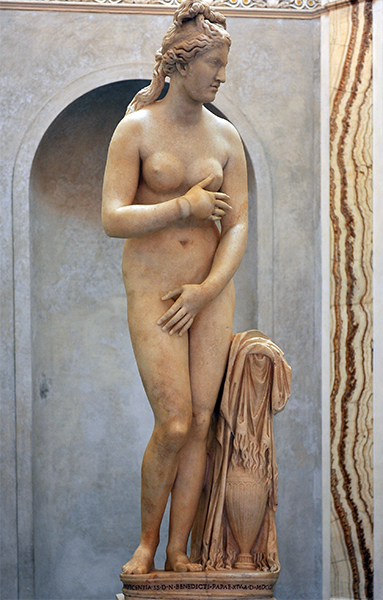"Venus herself, as oft as she lays aside her robes, half stooping covers with her left hand her modesty."
Ovid, Art of Love
Here, in a contrapposto stance, the weight of the body has been shifted from the right leg to the left. In both statues the goddess looks in the same direction, the right hand covers the breasts, while the left, which in the Knidian Aphrodite held her drapery, now conceals the pubis. Although, in the gesture of the hands, the Capitoline Venus seems to emphasize her nudity rather than conceal it, there still is the same lack of self-consciousness and indifference to her audience.
The Knidia of Praxiteles was sculpted c.350 BC but, in spite of its importance, there was a hiatus in the development of the archetype, and it is not until the late second century BC (150-100 BC) that imitations and variations of a more sensuous Aphrodite began to appear, as does the erotic love elegy as a new literary genre, in which the Latin poet is equally explicit in describing the beauty of his mistress. (Anecdotes about Praxiteles and Phrynę also begin to be told about this time, long after their supposed liaison. They probably are fictitious, as is much that was said of the courtesan.)
Originally hidden in a wall, the sculpture was found between 1667 and 1670 near the basilica of San Vitale and donated to the Capitoline Museums (Palazzo Nuovo) by Benedict XIV.
